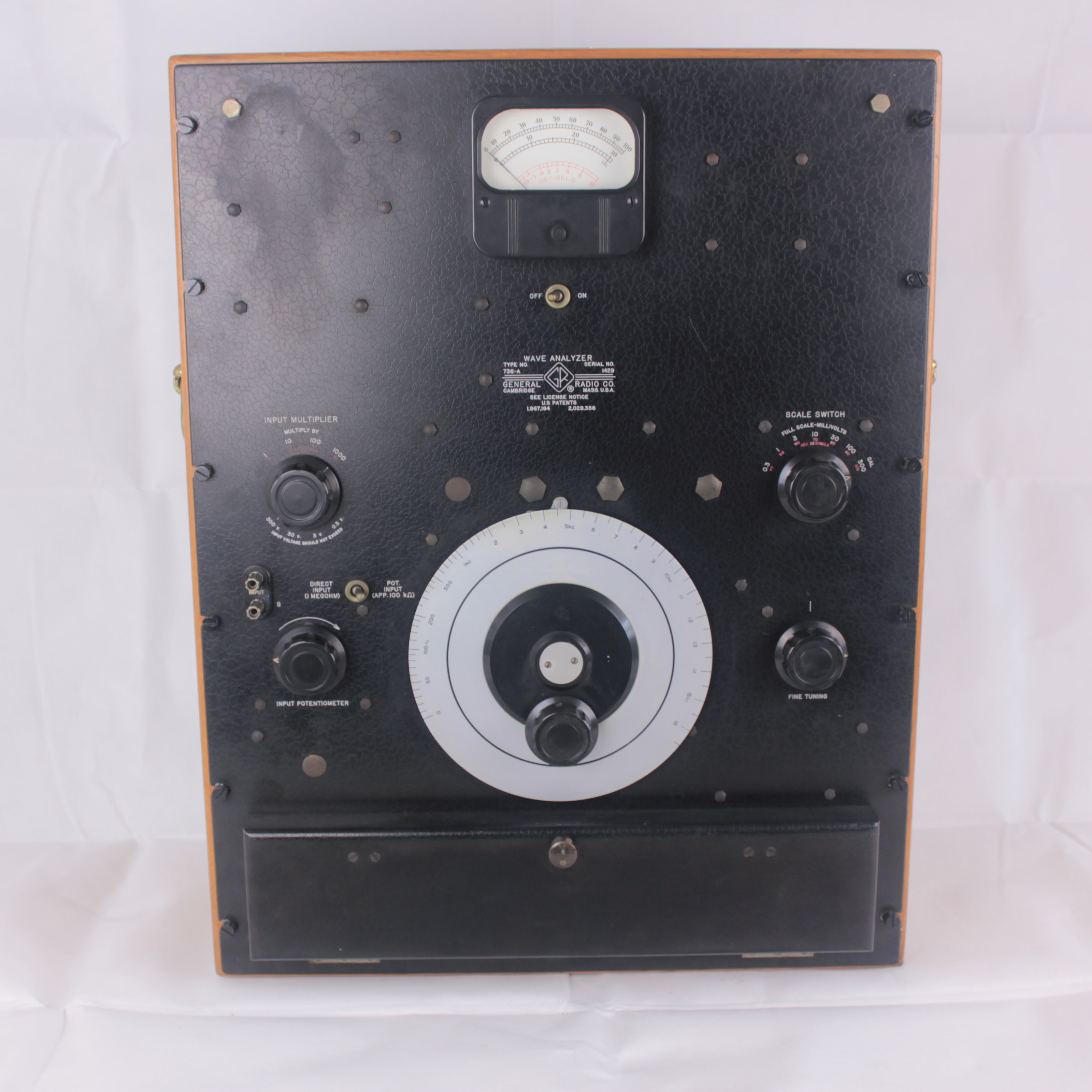
The 736-A wave analyzer is used to measure the amplitude of the individual harmonic components (sinusoids) that make up the spectrum of an electrical signal. It works in the frequency range between 20 Hz and 16.5 kHz and measures voltages between 30 microvolts and 300 volts. It is basically a selective tube voltmeter with a 4 Hz bandwidth; can be considered the forerunner of the modern spectrum analyzer.
Insights
The 736-A wave analyzer is used to measure the amplitude of the individual harmonic components (sinusoids) that make up the spectrum of an electrical signal. It works in the frequency range between 20 Hz and 16.5 kHz and measures voltages between 30 microvolts and 300 volts. It is basically a selective tube voltmeter with a 4 Hz bandwidth; can be considered the forerunner of the modern spectrum analyzer.
The instrument is tuned to the frequency of the harmonic component whose amplitude is to be measured and its operation is similar to that of a superheterodyne receiver. The input signal is converted to intermediate frequency (IF) by mixing it with that generated by a local oscillator, whose frequency is adjustable via the large central tuning knob. The IF chain has a very selective three-section crystal filter, with a central frequency of 50 kHz and a bandwidth of about 4 Hz. The harmonic component of the input signal whose frequency, added to that of the local oscillator, is equal to 50 kHz (+/- 2 Hz), passes through the filter and its amplitude is measured by the large analog instrument present in the upper part of the front panel.